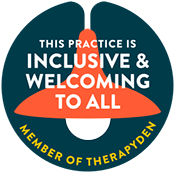12 Common Questions About EMDR Therapy Answered

By Brenda Stephens, LPCC
Welcome to our guide on EMDR therapy! If you’re curious about this innovative treatment, you’re in the right place. Here, we’ll dive into 12 common questions to help you understand EMDR therapy better
1. What Exactly Is EMDR Therapy?
EMDR therapy, which stands for Eye Movement Desensitization and Reprocessing, is a form of psychotherapy that helps individuals process traumatic memories and negative life experiences. It incorporates elements from various therapeutic approaches, including cognitive-behavioral therapy, mindfulness techniques, and psychodynamic therapy.
The key component of EMDR therapy is bilateral stimulation, which can include eye movements, taps, or sounds. This bilateral stimulation is believed to help the brain reprocess traumatic memories, leading to reduced emotional distress and overall healing.
Originally developed in the late 1980s by psychologist Francine Shapiro, EMDR therapy has since gained recognition as an effective treatment for PTSD, phobias, anxiety, and other mental health conditions.
2. How Does EMDR Therapy Work?
During an EMDR therapy session, the therapist guides the client through a series of protocols designed to target specific traumatic memories or distressing experiences. The client is asked to focus on the disturbing memory while simultaneously engaging in bilateral stimulation.
This process is thought to activate the brain’s natural healing mechanisms, allowing the individual to reprocess the memory in a new and less distressing way. Over time, the emotional charge associated with the memory diminishes, leading to symptom relief and psychological healing.
Through this unique approach, EMDR therapy aims to help individuals overcome the negative impact of past experiences and develop more adaptive coping strategies for the future.
3. Is EMDR Therapy Effective for Everyone?
While EMDR therapy has shown significant effectiveness in treating trauma-related conditions, its outcomes can vary from person to person. Factors such as the nature of the trauma, individual differences, and the presence of co-occurring mental health issues can influence the effectiveness of EMDR therapy.
Research and clinical experience suggest that EMDR therapy can be beneficial for many individuals, but it may not be suitable for everyone. It is essential to consult with a qualified EMDR therapist to determine if this approach is the right fit for your specific needs.
4. What Happens During an EMDR Therapy Session?
An EMDR therapy session typically begins with an assessment to identify the target memory or issue that will be the focus of treatment. The therapist helps the client establish a sense of safety and teaches coping skills to manage emotional distress.
Once the target memory is identified, the client is guided through the reprocessing phase, which involves recalling the memory, following the therapist’s hand movements or other forms of bilateral stimulation, and discussing any thoughts or feelings that arise.
Throughout the session, the therapist supports the client in processing the memory until it becomes less distressing. The session ends with a debriefing to ensure the client feels grounded and safe before leaving.
5. Are There Any Side Effects of EMDR Therapy?
Like any form of therapy, EMDR therapy may have potential side effects, though they are typically mild and short-lived. Some individuals may experience temporary distress, vivid dreams, or heightened emotions during or after EMDR sessions.
These side effects are generally considered a normal part of the healing process and tend to subside as therapy progresses. It’s essential for clients to communicate openly with their therapist about any experiences or concerns that arise during EMDR treatment.
6. How Long Does an EMDR Therapy Session Last?
The duration of an EMDR therapy session can vary depending on the therapist’s approach and the client’s needs. On average, a single session typically lasts between 60 to 90 minutes, including preparation, reprocessing, and debriefing.
For more complex traumas or challenging memories, sessions may extend beyond the usual timeframe. The number of sessions required also varies from person to person, with some individuals experiencing benefits in a few sessions, while others may require more extensive treatment.
7. Can EMDR Therapy Be Used for Trauma and PTSD?
EMDR therapy is widely recognized as an effective treatment for trauma and PTSD. By helping individuals process and reframe traumatic memories, EMDR can alleviate symptoms such as flashbacks, nightmares, and hypervigilance.
The structured nature of EMDR therapy allows for targeted processing of traumatic experiences, leading to symptom reduction and improved overall psychological well-being. Many individuals have found relief from their PTSD symptoms through EMDR therapy.
8. Is EMDR Therapy Safe and What Credentials Should a Therapist Have?
EMDR therapy is considered a safe and evidence-based approach when practiced by a qualified therapist. It is essential for therapists offering EMDR to have specialized training in this technique and be licensed mental health professionals.
Therapists who provide EMDR should have completed an EMDRIA-approved training program and adhere to the ethical guidelines and standards of practice set forth by professional mental health organizations.
9. How Many EMDR Sessions Are Typically Needed?
The number of EMDR sessions required varies depending on the individual’s treatment goals, the complexity of the issues being addressed, and the client’s response to therapy. Some individuals may experience significant improvement in symptoms after just a few sessions.
For more entrenched issues or multiple traumas, a more extended course of EMDR therapy may be needed. On average, EMDR treatment can range from 6 to 12 sessions, but this number can be higher or lower based on individual needs.
10. What Sets EMDR Therapy Apart From Other Therapeutic Approaches?
One key aspect that sets EMDR therapy apart from other therapeutic approaches is its focus on bilateral stimulation during memory reprocessing. By engaging the brain’s natural processing abilities through eye movements or other forms of bilateral stimulation, EMDR facilitates the reintegration of traumatic memories.
Additionally, EMDR therapy is known for its structured approach that targets specific memories or beliefs, allowing for rapid processing and symptom reduction. This targeted processing sets EMDR apart as a distinct and effective form of therapy.
11. Can EMDR Therapy Help with Anxiety and Other Mental Health Conditions?
In addition to trauma and PTSD, EMDR therapy has been found to be effective in treating anxiety disorders, phobias, depression, and other mental health conditions. The adaptive information processing model of EMDR allows for the reprocessing of negative beliefs and emotions underlying these conditions.
Many individuals have reported significant improvements in their anxiety symptoms and overall well-being after undergoing EMDR therapy. The targeted approach of EMDR can help address the root causes of anxiety and other mental health issues, leading to lasting positive outcomes.
By targeting specific memories or triggers that contribute to anxiety and other conditions, EMDR therapy empowers individuals to reframe their experiences and develop healthier coping mechanisms.
12. How Can Someone Find a Qualified EMDR Therapist?
Finding a qualified EMDR therapist involves several key steps to ensure you receive safe and effective treatment. Start by verifying that the therapist is licensed and has received specialized training in EMDR therapy from an EMDRIA approved organiztion (https://www.emdria.org/).
You can also inquire about the therapist’s experience in treating your specific concerns and ask about their approach to EMDR treatment. It’s essential to feel comfortable and supported by your therapist throughout the treatment process.
At Stephens Therapy Associates, nearly all of our therapists are trained in EMDR and understand trauma and the other issues EMDR is able to help resolve.






